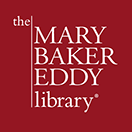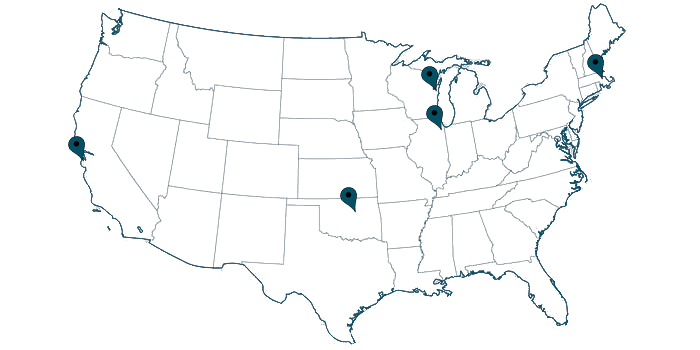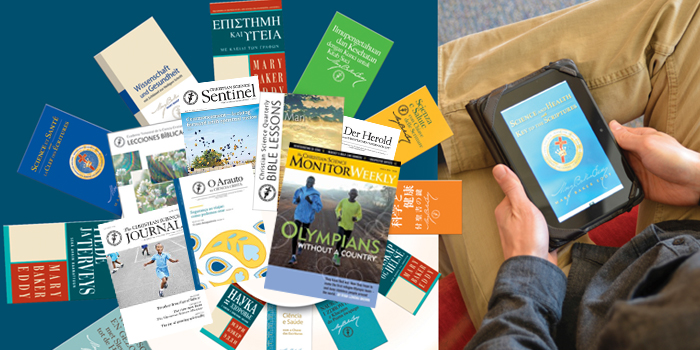Fervent Hearts, Willing Hands
Christian Science from discovery to global movementExplore this online display:
Discovery: Christian Science began with one woman
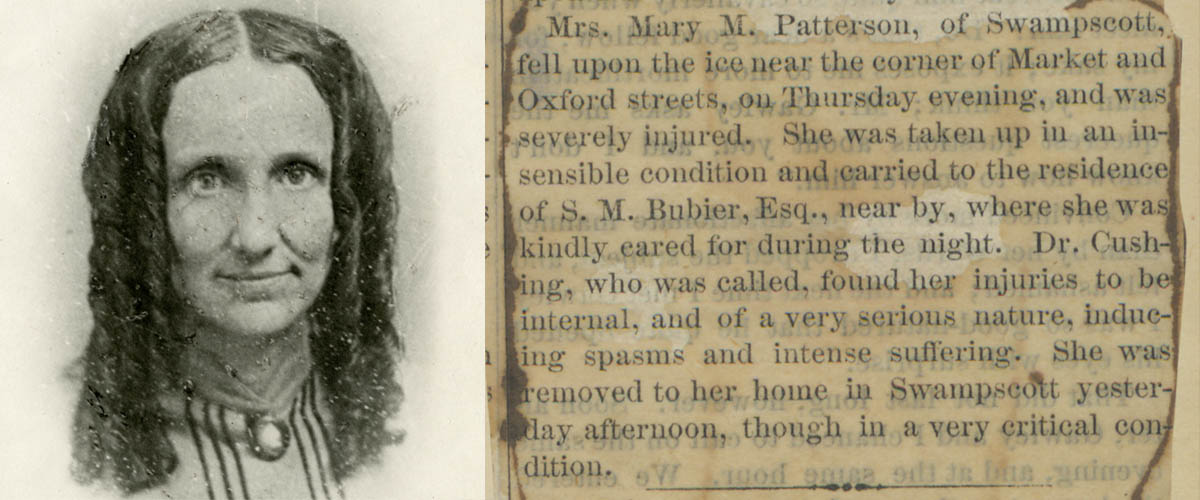
Photo left: Mary Baker Eddy, circa 1865. Photograph, Library Collections, P00241. Photo right: Lynn Reporter, February 3, 1866. Newspaper clipping. Library collections, SB001. Mary Patterson (later Mary Baker Eddy) was “severely injured.”
On a winter night in February 1866, Mary Baker Eddy (then Mary Patterson) was gravely injured when she fell on the ice in Lynn, Massachusetts. Many of those around her thought this would be the end of a life plagued by tragedy and illness. Instead it marked a new beginning. She later said that as she read the Bible story of one of Jesus’ healings, she, too,was healed.
To some her life might have looked bleak. She was nearly penniless and had no permanent home. But to Eddy this period of spiritual exploration was full of promise. This life changing experience reinforced her growing conviction that there must be a law or science of healing based on the Scriptures.
Mary Baker Eddy was convinced that this discovery, or science of healing, could be practiced by anyone. She tested it by healing others and soon began teaching her system of healing to men and women, who in turn established successful healing practices of their own. This practice came to be known as Christian Science.
Founding: a new church
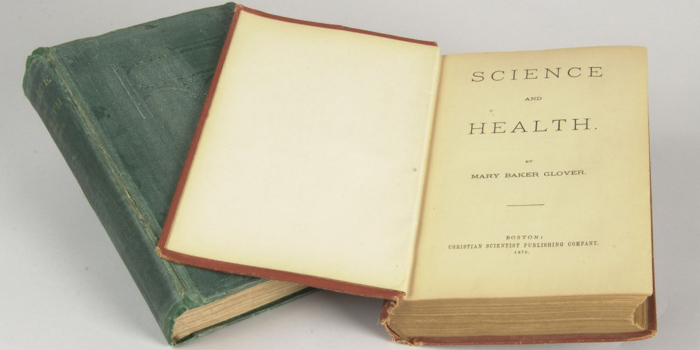
Photo: a first edition of Science and Health by Mary Baker Glover, published by Christian Scientist Publishing Company, Boston, printed by W. F. Brown & Co., Printers, Bromfield Street, Boston, 456 pages. © The Mary Baker Eddy Library.
Eddy published her book Science and Health in 1875. It was the focal point for the expression of her ideas. By the late 1870s, more and more people were reading Science and Health. Many were thankful for a new understanding of God as infinitely good, always present, and the only true power. Eddy preached weekly sermons at various locations around Boston. In 1879, Eddy and her students founded the first Christian Science church.
Movement: United States
Christian Science sparked growing interest in spiritual healing. But it departed from traditional religion and medicine, and its founder was a woman—at a time before women even had the right to vote. This stirred opposition. Meanwhile, those who were healed began sharing Christian Science, first in New England and then far beyond.
This map shows some early points of progress in the establishment of Christian Science in the United States. From east to west: Boston, Massachusetts; Chicago, Illinois; Oconto, Wisconsin; Stillwater, Oklahoma; and San Francisco, California.
1884: Chicago, Illinois
Chicago became important to the expansion of Christian Science beyond Boston. Bradford Sherman and his wife, Mattie, were healed there through studying Science and Health. In 1884 they invited Mary Baker Eddy to teach a class in the city. She agreed—if they could gather at least 14 interested pupils. They found 26, many of whom went on to establish healing ministries. While in Chicago Eddy also lectured to a crowd of 400.
1886: Oconto, Wisconsin
At 25 and chronically ill, Laura Sargent traveled to see a Christian Science practitioner. Inspired by her speedy return to health, she and her sister Victoria began healing others in Wisconsin. Interest in their work grew and, with help from the Sargent family lumber business, they built a church in just four months. It was the first Christian Science church building in the world and is still used for Christian Science services today.
1894: Boston, Massachusetts
Boston became the headquarters for Christian Science. In 1894 Christian Scientists built the Original Mother Church, adding the larger Extension in 1906.
1895: Stillwater, Oklahoma
Pioneer families joined together to build a Christian Science church with their own hands. Some gave money, pledging a total of $332.50. Others gave lumber and fabric, labor and craftsmanship.
1906: San Francisco, California
Christian Scientists purchased an empty building lot a few months before the 1906 earthquake. Fire engulfed much of the city, destroying the Jewish synagogue where they had been meeting. Undaunted, they met outdoors on their new property and later built their church. For a deeper dive, click here.
Movement: beyond the United States
Photo collage of Christian Science publications, 2016.
Magazine publication
Christian Science first began to expand outside North America in the 1880s. Mary Baker Eddy indicated her wish in 1902 for “…sending Christian Science publications to Germany.” In 1903 The Herald of Christian Science was established as a monthly magazine for German-speaking audiences. Today the Herald is published in 14 languages, in print and online.
Global newspaper
Mary Baker Eddy started a newspaper, The Christian Science Monitor, in 1908, with the object “to injure no man, but to bless all mankind.” It quickly gained an international readership. The Monitor delivers global news from 114 countries through its website, digital editions, and weekly print magazine.
Translations
In 1910 Eddy requested that Science and Health be translated into German. Many other translations have followed. The book is now available in 17 languages and English Braille. It can be read online at christianscience.com.
Movement: global
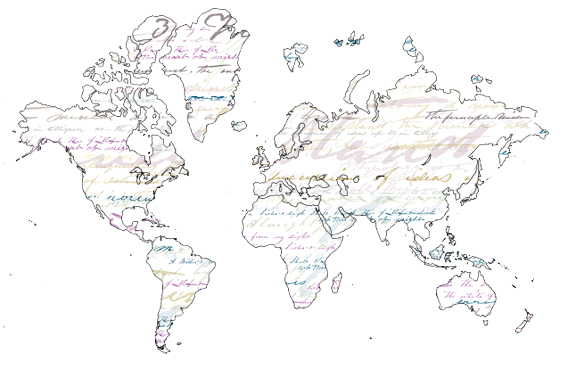
Background image: selections from the writings of Mary Baker Eddy, in her own hand. Courtesy of The Mary Baker Eddy Library.
Latin America
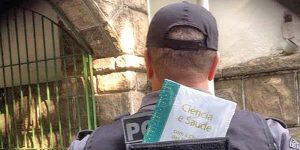
Photo of a policeman carrying a copy of Science and Health with Key to the Scriptures during the World Cup, in Rio de Janeiro, Brazil, 2014. Photograph, courtesy of Evelin Frizotti.
Christian Science healing was first established in large cities such as Buenos Aires, Mexico City, and Montevideo. Immigrant English and German speakers aided its growth. Science and Health was published in Spanish (1947) and Portuguese (1963), helping native speakers to study and practice the religion.
Today Christian Science churches are active in 13 Latin American countries.
Europe
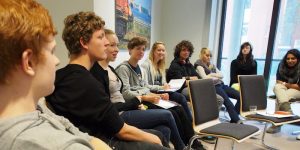
Photo of a 2012 Church of Christ, Scientist Youth Summit, in Hamburg, Germany. Photograph © Oliver Elsner.
Mary Baker Eddy sent a copy of Science and Health to the Dean of Westminster, London, in 1875. Interest was growing by the 1890s, particularly in Great Britain. At first little on Christian Science was available in other languages. However, translation of Science and Health into languages including German and French supported sturdy growth throughout Europe.
Relief activities by The Mother Church touched many lives during World Wars I and II. In the late 20th century, the end of the Cold War allowed freer practice of Christian Science in the former Communist bloc.
Africa
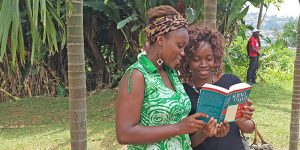
Photo of women reading Science and Health with Key to the Scriptures, in Cameroon, Africa, 2015. Photograph courtesy of Jérôme Ndjock.
Many Africans become interested in Christian Science through reading Science and Health. In the 1980s and 1990s, shortwave radio broadcasts sparked the desire to know more.
One listener in Burkina Faso wrote: “When I had to leave my parents to live 200 miles away, I thought I would break down. But one day I picked up (a Christian Science) program on the radio, and since then a new hope has dawned for me….”
Christian Scientists are active today in much of sub-Saharan Africa.
Asia and Oceania
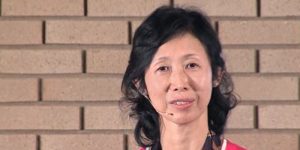
Photo of Fujiko Takai Signs, CSB. A member of the Christian Science Board of Lectureship, from Tokyo, Japan. Photograph © 2016 The Christian Science Board of Directors.
American, British, and Dutch expatriates introduced Christian Science to parts of Asia in the early 20th century. It gradually drew local followers in a number of countries where Christian Scientists are still active today, including India, Indonesia, Japan, and the Philippines.
Australians traveling in Europe first learned of Christian Science in 1891. An early church magazine referred to Australia as “a far-away vineyard.” In both Australia and New Zealand, interest grew as people came into contact with Christian Science.
While no offering can liquidate one’s debt of gratitude to God, the fervent heart and willing hand are not unknown to nor unrewarded by Him.
Read our exhibit blogs:
From the Collections: Christian Science on college and university campuses
See how this important activity has evolved and endured, from seeds sown in the late 1800s.
Did Mary Baker Eddy ever touch a lion?
Find out what could have drawn her to such an experience.
From the Papers: The Chicago institutes
Read about an effort to give Christian Science more visibility in a fast-growing metropolis.
